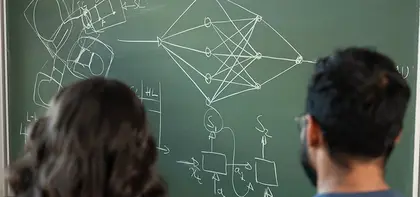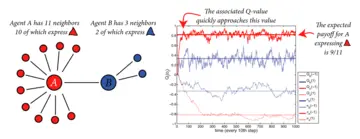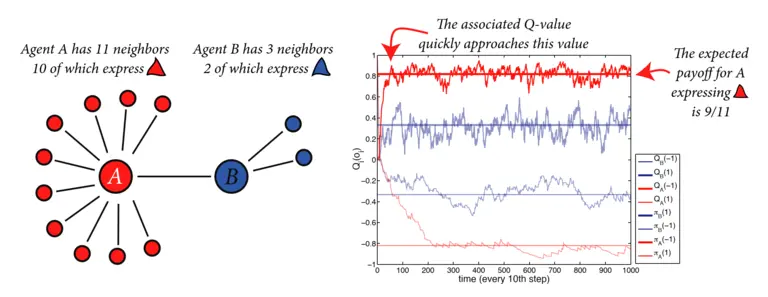
Opinion Models in Odycceus: Social Feedback and Polarization
Published Aug 14, 2020
Sven Banisch and Eckehard Olbrich
Opinion dynamics aims to improve our understanding of the dynamics of public opinion formation by the use of mathematical models. One of the most puzzling theoretical questions in this field is how opinion differences and polarization can persist under the aligning forces of social influence. Within the ODYCCEUS project we develop a new account for modelling polarization through reinforcement learning in repeated games on networks by social feedback [2,3,1].
Social feedback theory is based on the fact that humans are sensitive to social approval and disapproval. It differs fundamentally from most previous modelling approaches by distinguishing between the act of expressing an opinion in some social environment and an internal evaluation of the feedback that agents can expect from peers when expressing their view. It conceives social interaction as a game in which agreement leads to a positive reward (


If agents connected on a social network adapt according to this scheme in repeated interactions they learn an internalized value Q for how accepted their opinion is among their direct peers which corresponds to their expected reward given the current network configuration (see Fig. 1). This means that the stable macroscopic outcome of the opinion formation process can be characterized as a game theoretical equilibrium, the Nash equilibrium: given the configuration of all players' actions no agent alone can improve her payoff by switching to the opposed action.<-p>


Hence, if a network can be partitioned into at least two subsets such that all nodes have most connections within their set, this is sufficient to generate stable bi-polarization where different groups of agent become strongly convinced in different opinions (see Fig. 2). Such subsets are called cohesive sets [5]. In large social networks the existence of cohesive groups is the rule rather than the exception and our work shows that “echo-chamber-processes” do not require strong network segregation.
While [2] presented the first illustration of the social feedback paradigm, further work is pursued within the Odycceus project to bring the models closer to data. With the Sociology Department at the University of Leipzig a series of experiments has been performed to assess the impact of positive and negative feedback on private opinions. Using Odycceus tools such as the Twitter Explorer [6] we have analysed online communication activity with respect to recent events in Saxony (elections and New Year's Eve riots) [4].
References
| [1] | Sven Banisch, Felix Gaisbauer, and Eckehard Olbrich. How social feedback processing in the brain shapes collective opinion processes in the era of social media. arXiv preprint arXiv:2003.08154, 2020. |
| [2] | Sven Banisch and Eckehard Olbrich. Opinion polarization by learning from social feedback. The Journal of Mathematical Sociology, 43(2):76–103, 2019. arXiv:1704.02890. |
| [3] | Felix Gaisbauer, Eckehard Olbrich, and Sven Banisch. The dynamics of opinion expression. arXiv preprint arXiv:1912.12631, 2019. |
| [4] | Felix Gaisbauer, Armin Pournaki, Sven Banisch, and Eckehard Olbrich. Capturing the structure of public debate on twitter: Two case studies. Submitted. |
| [5] | Stephen Morris. Contagion. The Review of Economic Studies, 67(1):57–78, 2000. |
| [6] | Armin Pournaki, Felix Gaisbauer, Sven Banisch, and Eckehard Olbrich. The twitter explorer: a framework for observing twitter through interactive networks. arXiv preprint arXiv:2003.03599, 2020. |